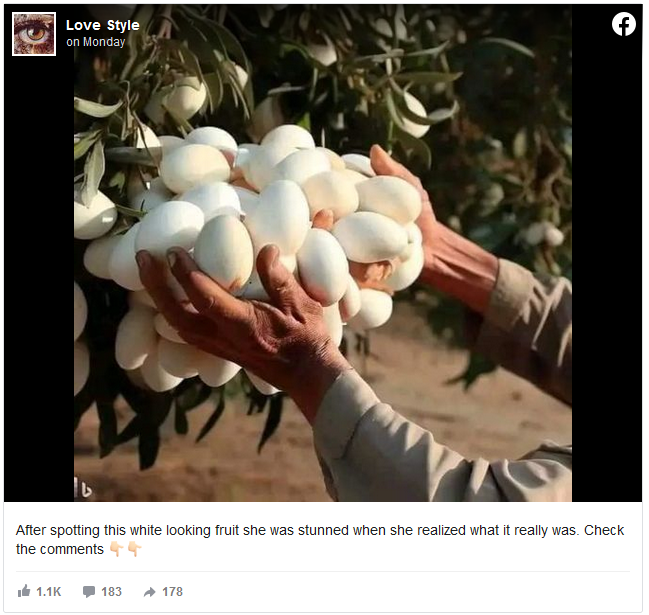Though often eaten savory, our imagination of an eggplant is of a long, purple fruit, not at all like these.
Either on its own or in a meal, eggplant makes a wonderful addition! They can be cooked with cheese and tomato sauce, roasted on the barbecue, or added to any recipe.
However, have you ever given the fruit’s unusual moniker any thought? Eggs don’t resemble traditional eggplants at all.

But now that this image has gone viral on Reddit, this name makes a lot more sense!
Now that we have a better understanding of how eggplants truly appear before they transform into the adored variety we are all familiar with, let’s discover more about the differences between white and purple eggplants.
White eggplants, often called aubergines, are a type of eggplant, as opposed to the more common deep purple color.
Although the image might suggest that all white eggplants are small, they have the potential to grow to be larger. In the same way, purple eggplants can occasionally be small and spherical.

Vegetable white eggplant, fresh and organic
All varieties of eggplant have the potential to have a harsh, gritty flavor when raw. Fruit that hasn’t been cooked beforehand resembles a sponge in texture.
When cooked, it is a great dish to absorb the flavors of whatever is served with it. They can be baked, fried, sautéed, roasted, or grilled. They pair particularly nicely with mild sauces or dishes with subtle flavors.
It can get too mushy and overcooked to be enjoyable.
Specialty Produce praises fried white eggplant as “warm” and “mellow,” and its flavor as “fruity and mild.”

A white eggplant has a thicker skin, which should be peeled off before cooking or eating. Purple eggplant has a thinner skin and is edible.
While white eggplants are less common than regular eggplants, home gardeners can often find them online in seed catalogs or in specialty stores.
The earliest known mention of eggplants as a fruit with an odd name was found in a 544 Chinese text on agriculture. Legend has it that European farmers gave the fruit its name in the 1700s. Because they looked like miniature white or yellow eggs at the time, the farmers named them after the geese or ducks that they had seen.
It may surprise you to learn that eggplants may look like this. Tell us by leaving a comment below!








Leave a Comment